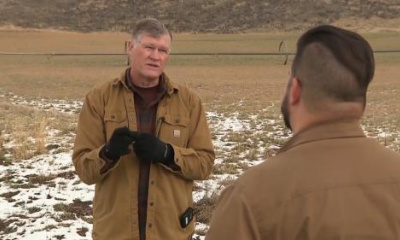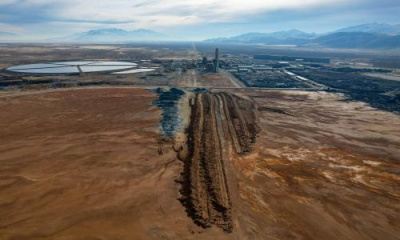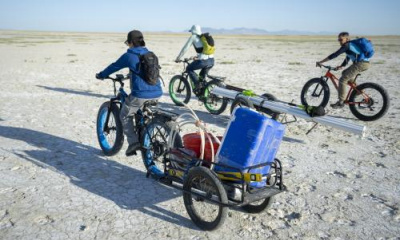The Great Salt Lake Collaborative surveyed audience questions about the lake, and The Globe is publishing experts’ answers to your questions weekly. This week’s edition focuses on the idea of pulling water from the ocean, lake area prioritization and license plates.
why can’t we bring water from the ocean?
Jaimi Butler, coordinator of Westminster College’s Great Salt Lake Institute, thinks conservation and alternative restoration efforts may be the best choice for now.
One concern with bringing ocean water to Great Salt Lake is the possibility of creating an imbalance in saline levels. This option is also more expensive in the long run, she said, but Utah lawmakers are considering it.
This idea isn’t too far out there, though.
Natural resource agencies in California are evaluating the feasibility of importing ocean water to restore the Salton Sea with the goal of reducing dust from the exposed lakebed, improving air quality and restoring wild habitats.
Which parts of the lake must be saved, and what can be forgone?
Identifying the level of importance within the lake’s different areas is necessary, said Dr. Patrick Belmont, a hydrologist and geomorphologist at Utah State University, though he added that triaging which parts of the lake to focus on saving isn’t optimal at this point.
“I’m not saying it’s necessarily the wrong choice,” Belmont said, “but we can save the whole lake.”
He said all areas of the lake hold different values. For example, Farmington Bay has some of the greatest wildlife according to Belmont.
“Saving Farmington Bay would be a high priority in terms of preserving some of the natural ecosystem,” he said.
Saving Farmington Bay is important for air quality as well.
“Farmington Bay has lower salinity, so it doesn’t create quite as much of that salty crust that kind of stabilizes the soils,” Belmont said. This means Farmington Bay will generate more dust as water decreases.
The north arm of the lake is the hardest to save, according to Belmont, but it’s of high priority due to its central role in the mineral extraction industry.
However, if saving this part of the lake was forgone, and the north arm of the lake dried up, evaporation over the remainder of the entire lake would decrease, Belmont said, allowing more water to flow to the southern arm.
“It’s one way to slow down the loss,” he said.
How can we get the Great Salt Lake to be a standard license plate in Utah?
The Great Salt Lake could be seen on license plates in Utah through two different avenues: a standard issue plate or a special group plate.
For a standard issue plate—like the ones depicting a skier or Moab Arches—the Utah Legislature would need to pass a law and allocate funds, said Jason Gardner, the director of Legislative Affairs at the Utah Department of Motor Vehicles.
If such a law is passed in the upcoming 2023 Legislative session, standard issue plates could be available by Oct. 15, 2023.
Another alternative is a group license plate which can “generate revenue for a cause, such as restoration or protection of the Great Salt Lake,” Gardner said.
First, an organization or group must gather 500 signatures of applicants who want to apply. Upon completion, the plates are manufactured, Gardner said. The money for the license plate goes directly to the special group.
Dozens of these types of plates already exist, supporting groups ranging from Utah’s colleges to veterans’ groups.









